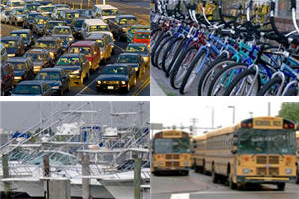Guidelines is a monthly newsletter of the San Francisco City Guides webpage containing articles about San Francisco’s history. One article in particular focuses on Lombard Street, a road constructed in 1922 with 8 turns, a 16% steep grade, and 250 steps per side. This is one of the steepest and curviest streets to date and upon construction immediately posed problems for the growing urban city. In this article, Susan Saperstein writes about how the city paid for the street on the condition that the residents maintain the plantings. As would be expected, neighbors complained and argued about the management of the plants and shrubbery. On top of this, the plants did not hold the soil back and erosion problems arose. However, it was soon discovered that hydrangeas have the ability to prevent erosion and these plants soon lined the 250 steps of Lombard Street. Today this road is a popular tourist destination and illustrates the marvels of urban road planning and environmental wonders.



 based upon the headings in bold and links to other pages with more information. There are links to the EPA’s data on improving gas mileage, current ozone levels, and automobile emissions. This informative website succeeds at educating the general public in a clear and concise manner.
based upon the headings in bold and links to other pages with more information. There are links to the EPA’s data on improving gas mileage, current ozone levels, and automobile emissions. This informative website succeeds at educating the general public in a clear and concise manner.